32nd Annual Juried Photography Show
The work in this show is a mix of local, regional and national photography—from California to Massachusetts. For the first time in the thirty-two years of this show, it was open to photographers nationwide. They have submitted a variety of work including landscapes, portraits, street photos, and abstracts. Prizes will be awarded by the opening of the show online, June 3rd by Jan Kather, prize judge. The show runs through the end of June, and can be viewed online only.
About the Judge
Jan Kather (M.F.A. Cornell, 1982) has been practicing the photographic arts since the late 1970s when she began graduate studies at Cornell University. Today she teaches photography, video art, humanities and women’s and gender studies courses at Elmira College, Elmira, NY. Her recent artwork often criss-crosses between photography, video, collage, fabric arts, and art history. Her photo based works have been seen most recently in the 2020 Arnot Art Museum Gallery Gala (Elmira, NY) and Continuing the Dialog: The State of Photography II at Nazareth College (Rochester, NY). She has also exhibited with two international collaborative art projects, the Exquisite Corpse Video Project and Roundtable Postal Collage Project No. 10 (Berkeley, CA) in 2020-21.
Jan Kather's Review
As I scrolled through the 92 photographic images selected by the photographer-members of SoAG, I was impressed with the breadth of possibility before me. I recognized a diversity of style and a wide range of approaches representative of contemporary photography: portraiture, natural and urban landscapes, still life, close-ups, botanicals, digital collage, and abstraction. Studio techniques comfortably sat side by side with digital invention, sometimes blurring the distinction between the two. I was delighted to see a cyanotype, seemingly an ancient technique at this point, hold its own with conceptually based images that were sometimes infused with clever word play. As I had anticipated, there were plenty of photographic responses to the COVID-19 pandemic of 2020–21.
With such a varied array of visual expression, I felt awards only made sense when comparing images within the categories I devised after viewing the works over a period of several days. With such a strong presentation of work, this task was not easy. I will do my best to explain the reasoning behind my choices, but at the end of the day, this process is akin to choosing the Red Delicious over the Macintosh apple: personal taste and experience guide the rationale, with the caveat that both are delightful, and on any given day, I just might prefer one over the other. Awards of $100 each will be distributed among the ten artists whose works I have chosen to discuss below.
Jan Kather
June 1, 2021
Picks by Category
The Pandemic
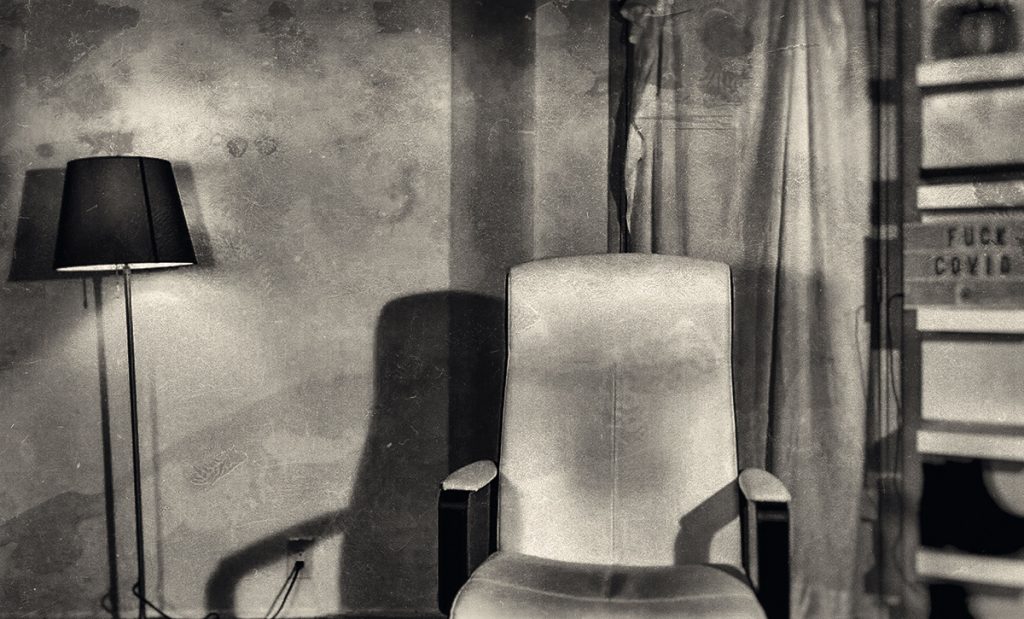
Even before I noticed the COVID expletive hovering on the right side of this image or read the title of this entry, I sensed the empty chair represented those who lost their lives because of COVID-19. We are told that, among others, the poor and the elderly were likely to be its victims. That assessment is exactly what I see visualized in this room. The spare, smudged furnishings show traces of someone who had spent many days of their lives just sitting, maybe reading newspapers or watching favorite tv shows, to pass the time. The artist’s choice of sepia tone emphasizes the possibility of the passing of an impoverished but colorful life. The lamp glows at left, like an electrified votive candle of remembrance. This image is less a memento mori than a visual ode to the most recent, darkest time in our collective global memory. This photo becomes a visual metaphor for “2020.”
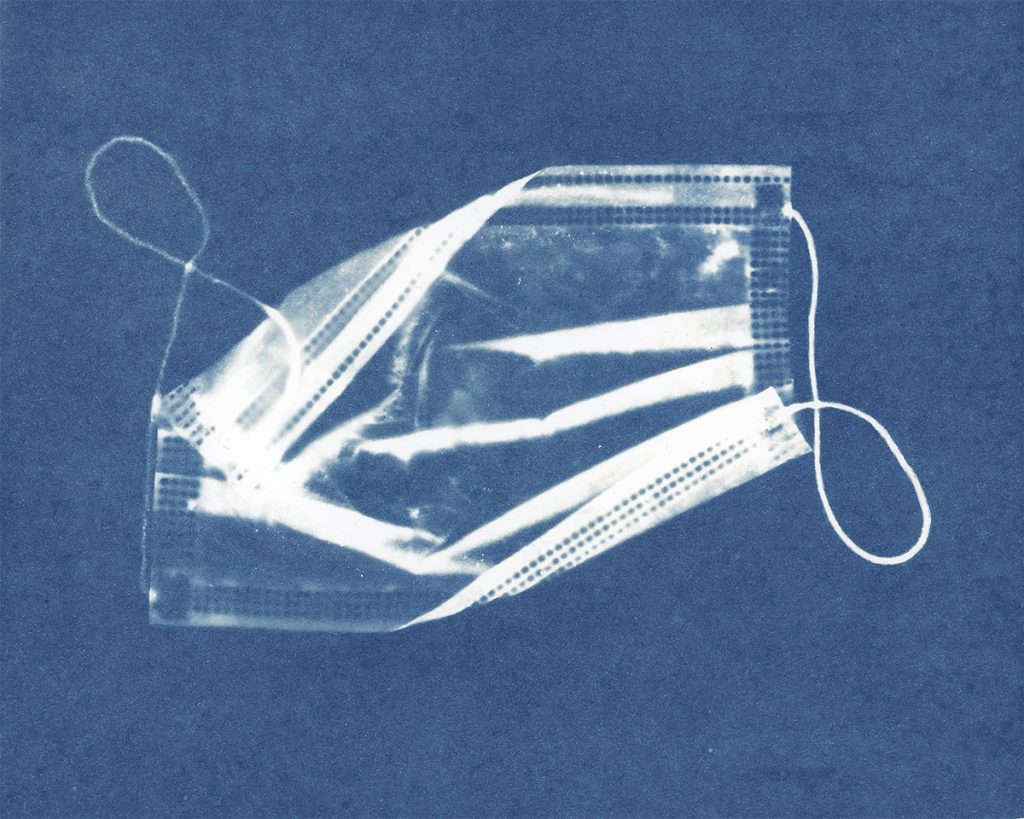
Less dramatically, the cyanotype haunts us with its direct imprinting of translucent, ghostly folds in the most basic of personal protective equipment, the face mask. Recalling the divisive controversies about wearing/not wearing a mask, I am saddened to see the effects of compliance: the casually discarded mask is as likely found on a nature path as in a parking lot. Simultaneously, I am reminded of the positive, unintended consequences: “Having been introduced to the idea of wearing masks to protect themselves and others, some Americans are now considering a behavior scarcely seen in the United States but long a fixture in other cultures: routinely wearing a mask when displaying symptoms of a common cold or the flu, even in a future in which COVID-19 isn’t a primary concern.” (New York Times)
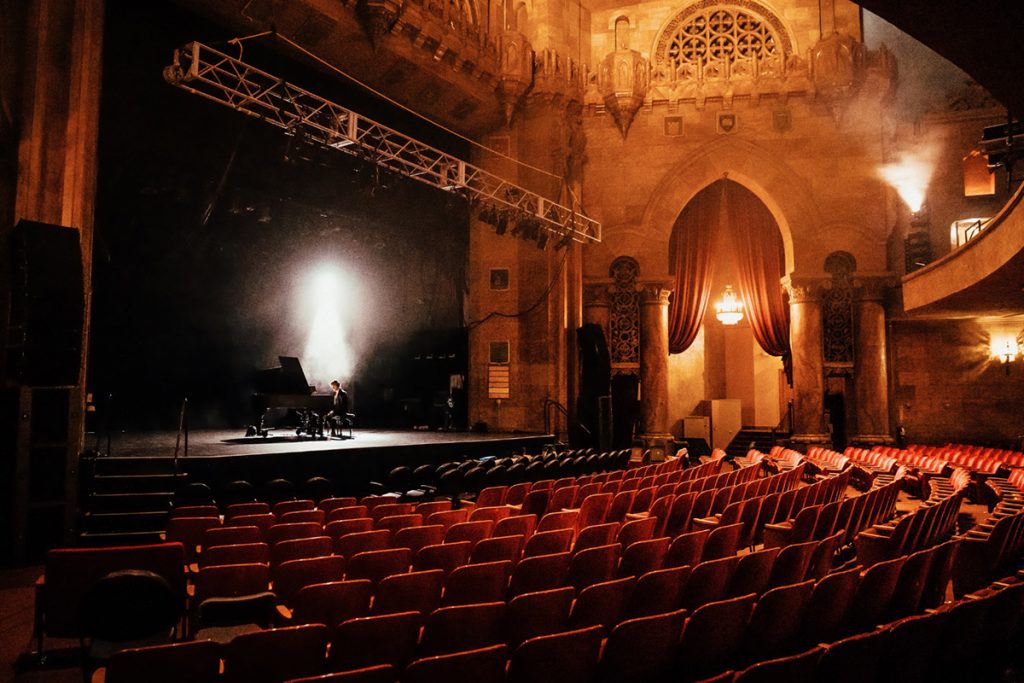
So many groups of people lost jobs during the pandemic as theatres, restaurants, gyms, and arenas closed to prevent the spread of COVID-19. This photo captures what many of us became accustomed to in 2020: the empty theatre with a single performer on stage, seen through remote viewing. Most recently we’ve read that “Broadway is back!” and venues closer to home plan for fall events. How we navigate these spaces, where art lovers have always congregated, remains to be seen.
Conceptual Art / Word Play
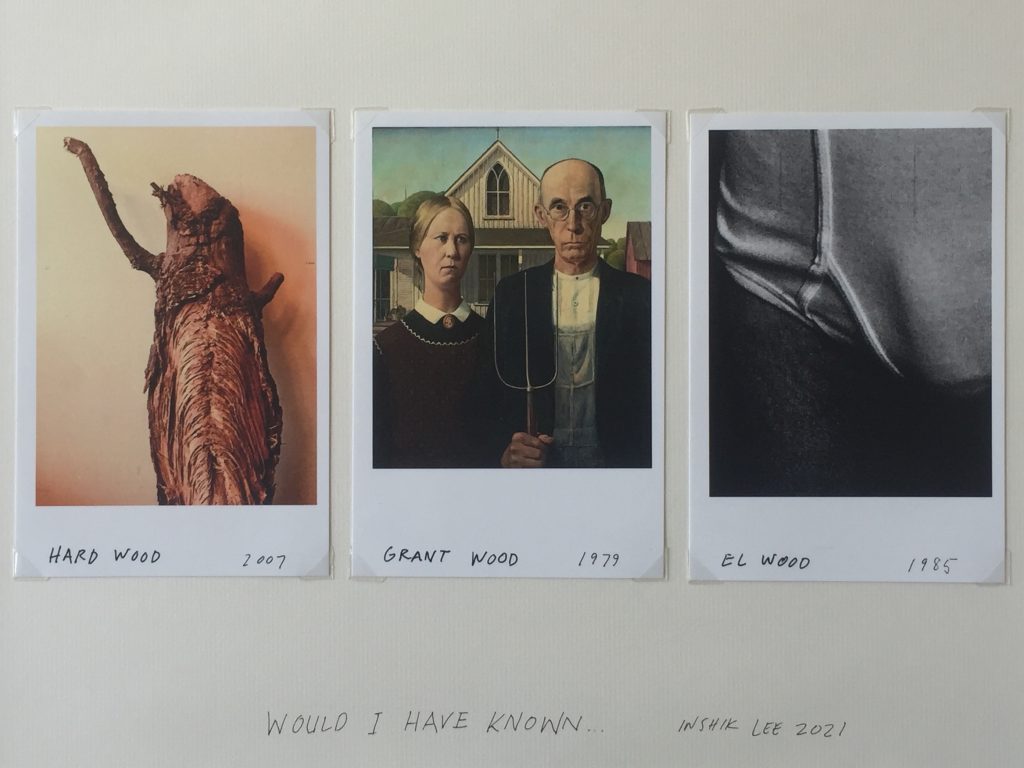
This triptych of imagery caught my eye, as the photo on the left looked like an insect waving at me. With unending news coverage of the current cicada invasion, I expected a dried up, locust-like specimen, but close inspection revealed that it was a piece of wood, “hard wood.” Next, “Grant Wood” and “El Wood,” and finally the title “Would I have known.” Just as the cicada takes 17 years to emerge, this visual puzzle-word play idea took 40 years to germinate, finally emerging as a clever appropriation of Grant Wood’s painting “American Gothic.” The compilation of imagery defies logic and instead, invites the viewer to play along with the word (wood) game. “How much wood…” and “Whose woods these are?” Would I have known? Woulda, coulda, and shoulda? Actually, I think I do and don’t know, and that’s the fun of viewing this piece. The visual humor is magnificent!
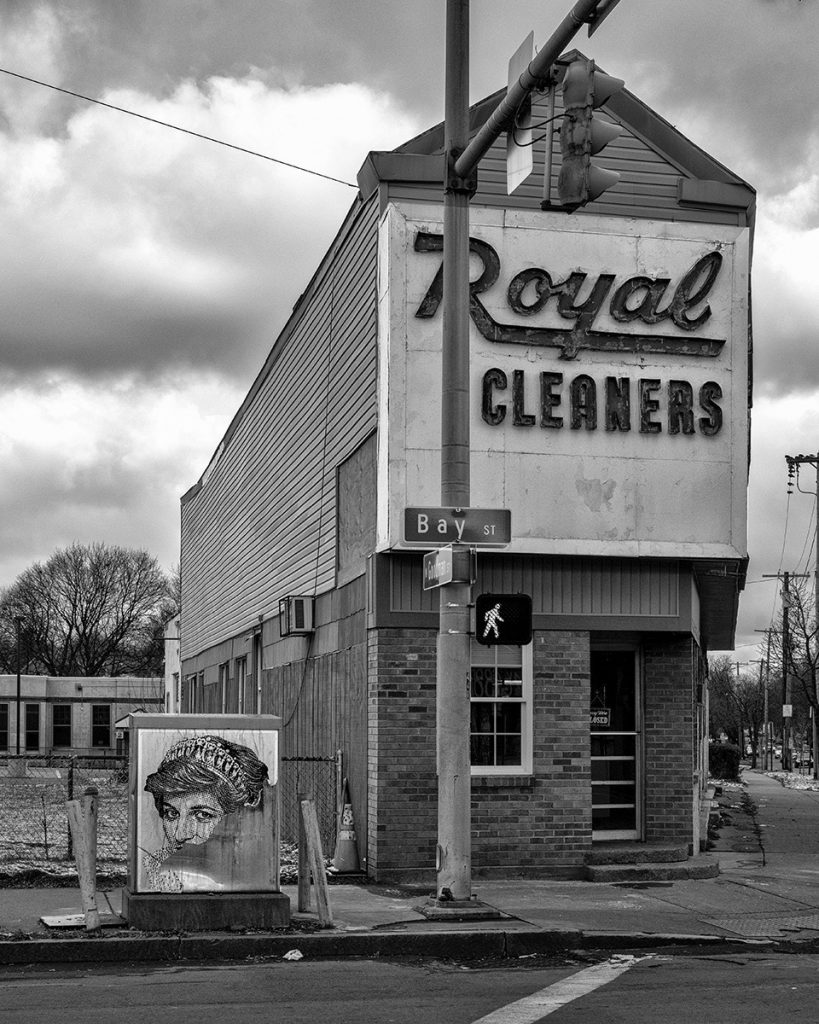
Although in the style of street photography, this classic black and white image of the Royal Cleaners also provides wordplay entertainment with its crumbling portrait of Lady Diana, as she disintegrates beneath the storefront located in an apparently rundown neighborhood. Like the cicadas, the Royals seem to regularly infiltrate American news, most recently with the rift between Diana’s youngest, Harry, and the royal family, and subsequently, the death of Prince Philip. The photo itself seems to come from decades ago, but its message is of the times. The royal cleaners keep trying to erase her memory, but Diana’s image, damaged as it might be, persists in this less than princely American neighborhood. I can imagine the founding fathers (after recovering from the shock at seeing such a seedy environment) would applaud the implied downfall of the British monarchy.
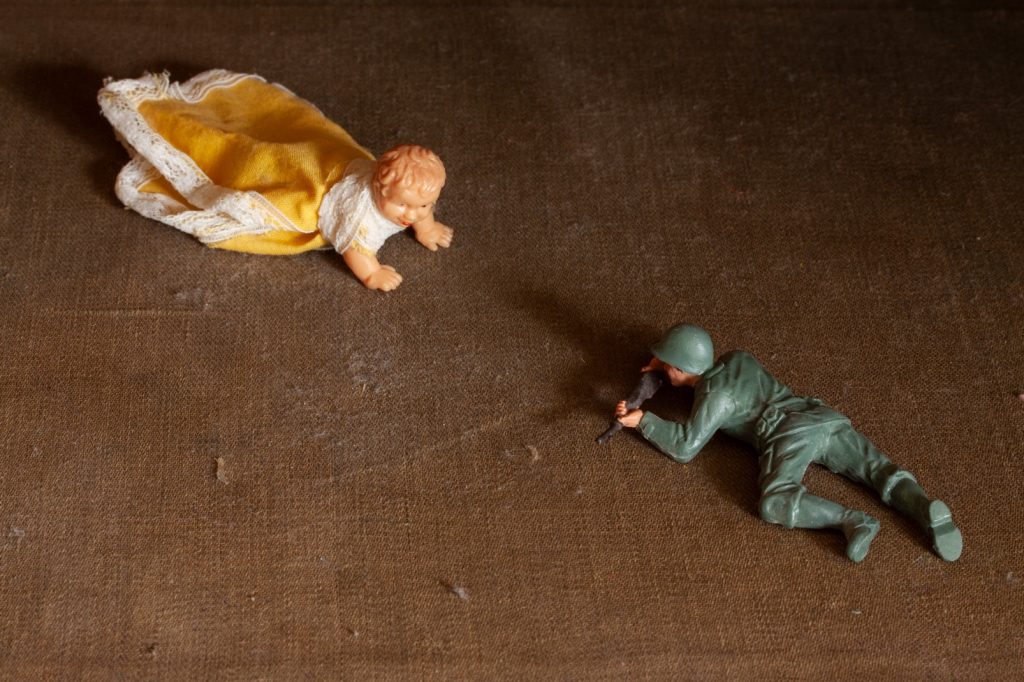
In my final selection in the conceptual art category, I have chosen the photograph “Crawling” because it economically asks questions about our gender expectations for young boys and young girls. We see a tiny baby doll crawling to meet a tiny action figure, also crawling, but bearing a gun. This poses questions about the ways we choose to model adult behavior in children’s toys. Do we see the baby doll as an appropriate girl’s toy, while the soldier is meant for boys? What of the confrontation between soldier and baby? The thought of civilian deaths, especially children, is dismissed by the victors. The ends justify the means. The baby doll also serves to remind us that all soldiers were once babies. How do we turn sweet, loving beings into hardened killers? This image seems simple at first glance, but a peek under the surface reveals some uncomfortable truths about our society.
Figurative Art
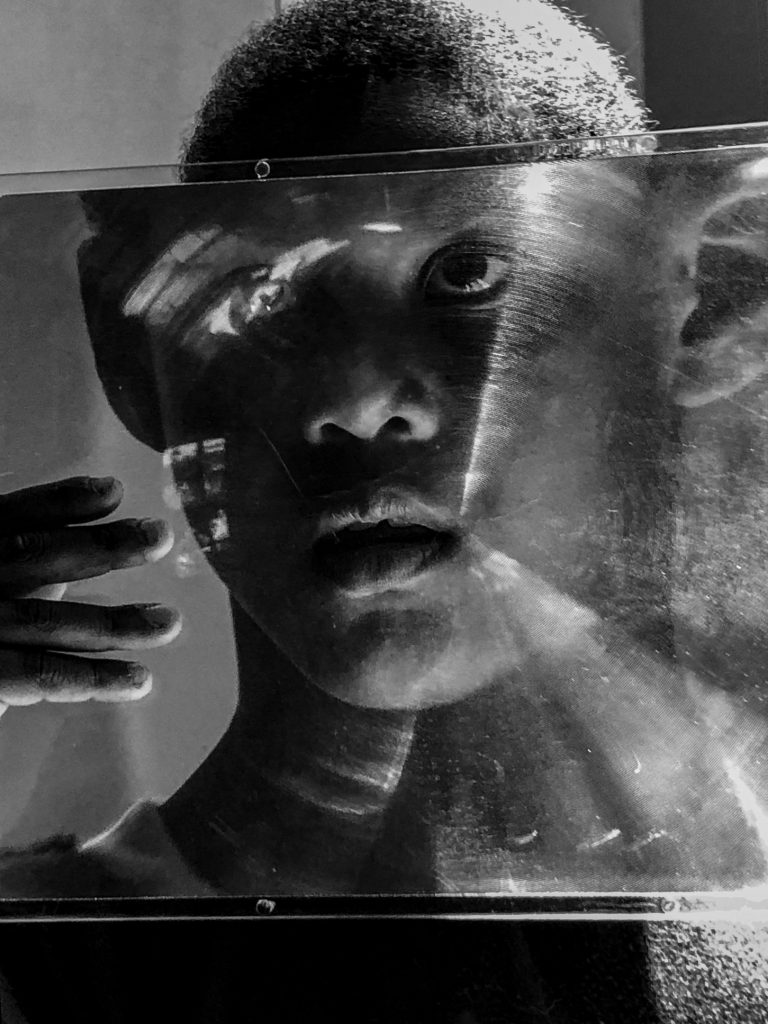
Figurative subject matter endures throughout all ages and in all media. We can see this in the popularity of the current Alice Neel painting retrospective at the Metropolitan Museum of Art in NYC, as well as in the earliest days of the daguerreotype. Much of the conversation about portraiture today concerns the questions: who is portrayed, how are they portrayed, and who is doing the portraying? The portrait Magnified Gaze engages with this idea. Does the distortion of the young boy’s face reflect the distortion he himself may feel as he looks out at a world that continues to magnify racial differences to the detriment of African Americans? The magnification could also represent oversized fears, both residing in him and in those who continue to promote racial profiling. Along with the pandemic, 2020 will be remembered for the gruesome death of George Floyd, among others. As I look into the innocent eyes of this young boy, I can only hope that he will be able to truly enjoy all the rights, freedoms and opportunities promised to all Americans.
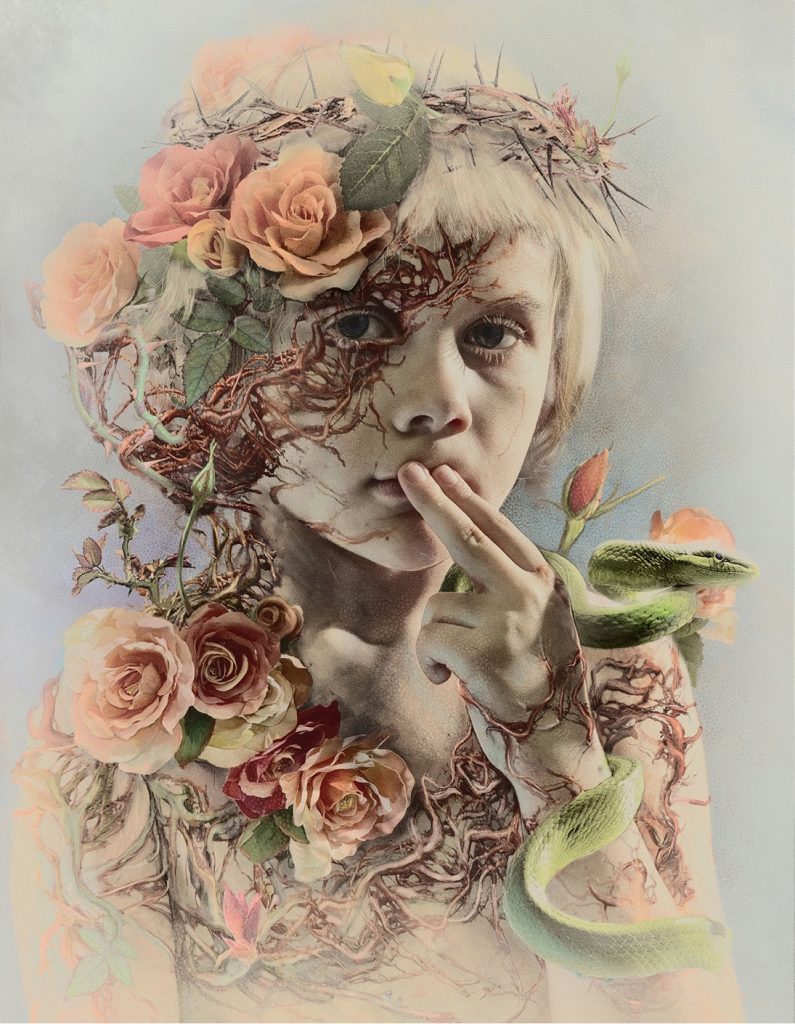
Digital inventions, or interventions, via photo editing programs, afford the artist new tools to create imaginary worlds that somehow exist in recognizable dreamworlds. In this mystical image, The Little Prince (Medical Trials of the Saints), the photo is described as hand colored, which I assume means “digitally” hand colored. I perceive it as an invented portrait that exists in the realm of make believe. The artist wraps their imagination around a reality so familiar, yet so strange. Although the title makes other references, I find this flower child, with a tangle of roses, thorns, and a coiling snake, conjures the gender fluid Shakespearean characters: Puck from A Midsummer Night’s Dream, or Ariel in The Tempest.
If we shadows have offended,
Think but this, and all is mended,
That you have but slumbered here
While these visions did appear.
(Puck, Act 5 Scene 1)
Go make thyself like a nymph o’ th’ sea: be subject
To no sight but thine and mine; invisible
To every eyeball else.
(Prospero to Ariel, Act I Scene 2)
Nature
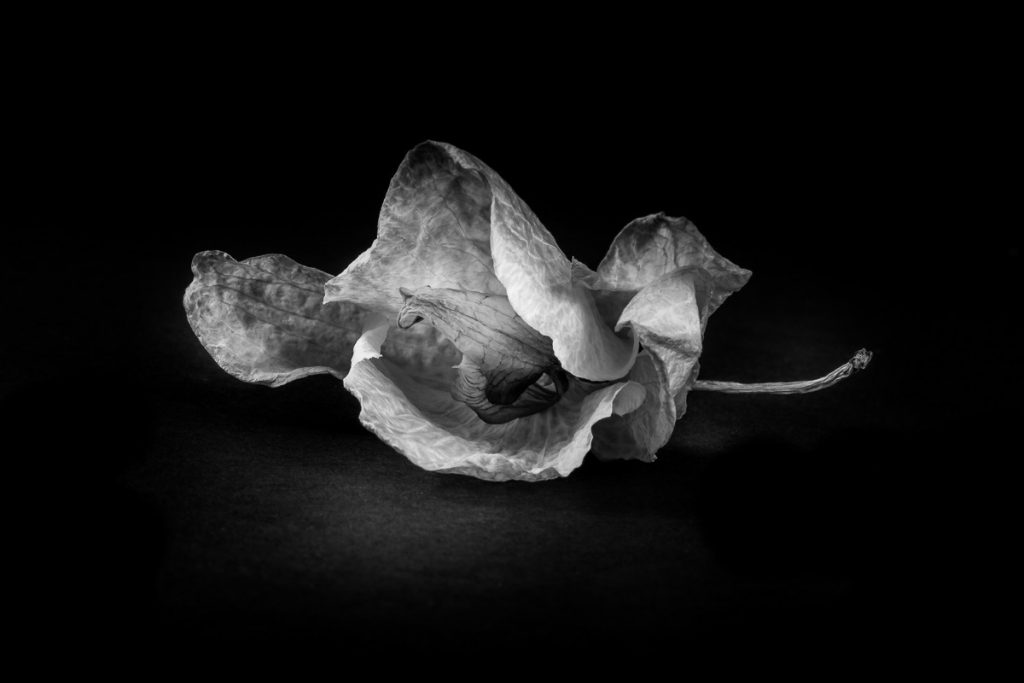
I must confess my bias leans heavily toward photographs of the natural world, whether visualized as straight photography, digitally enhanced imagery, or abstractions that exist simply as poetic visions of light, shadow, texture, and form. Although photo editing programs have “programmed” us to no longer obsess about color fidelity or other “best photo practices,” I find that I am still drawn to the clarity afforded by traditional criteria espoused by large format photographers of 1930s America, such as Edward Weston and Ansel Adams. The camera image sharply focused and printed with minimal intervention, other than fine adjustments in contrast and exposure, results in a ‘pure” image. With that in mind, I have chosen two photos representative of this august vision.
Is this a photo of a Rose of Sharon bloom in its last gasp of glory? Plant identification becomes secondary to the sense of melancholy I feel when viewing this waning plant form. I imagine the artist gleaned this fallen flower from the natural world and brought it into the studio to isolate and accentuate its beauty. Softly lit, the artist has chosen to separate the form from the background in a manner suggestively reminiscent of odalisque paintings like Ingres’ La Grande Odalisque, if not Edward Weston’s famous studio photos of shells and peppers.
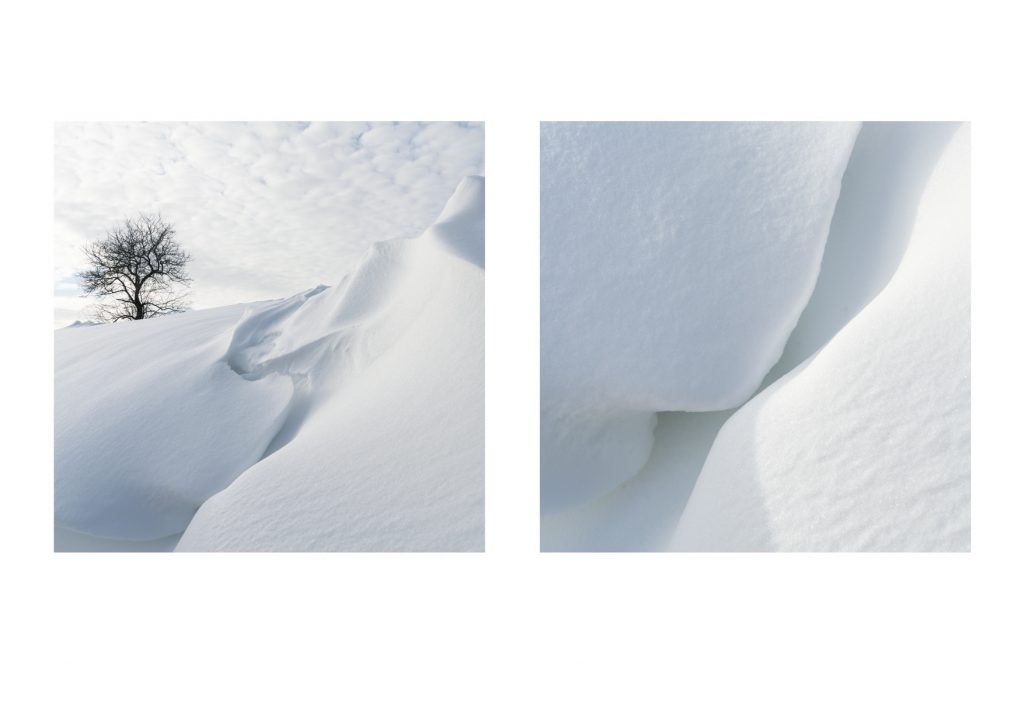
And speaking of Edward Weston’s vision that conflated natural forms with his photographic studies of nudes, I was struck by how much this diptych resonated with his sand dunes photos and Imogen Cunningham’s famous 1928 photo “ Triangles.” Ironic, I think, that snow could evoke the sensual warmth of skin or undulating desert sands. This pair of images also reminded me of my own walks in nature this past winter after upstate New York was blanketed in two feet of snow, a thick blanket layer that stayed with us for months. The power of the photographic image to take me back to this memorable time of just months ago reminds me of how easily I can forget both the beauty and the terror of a winter in the Northeast.
